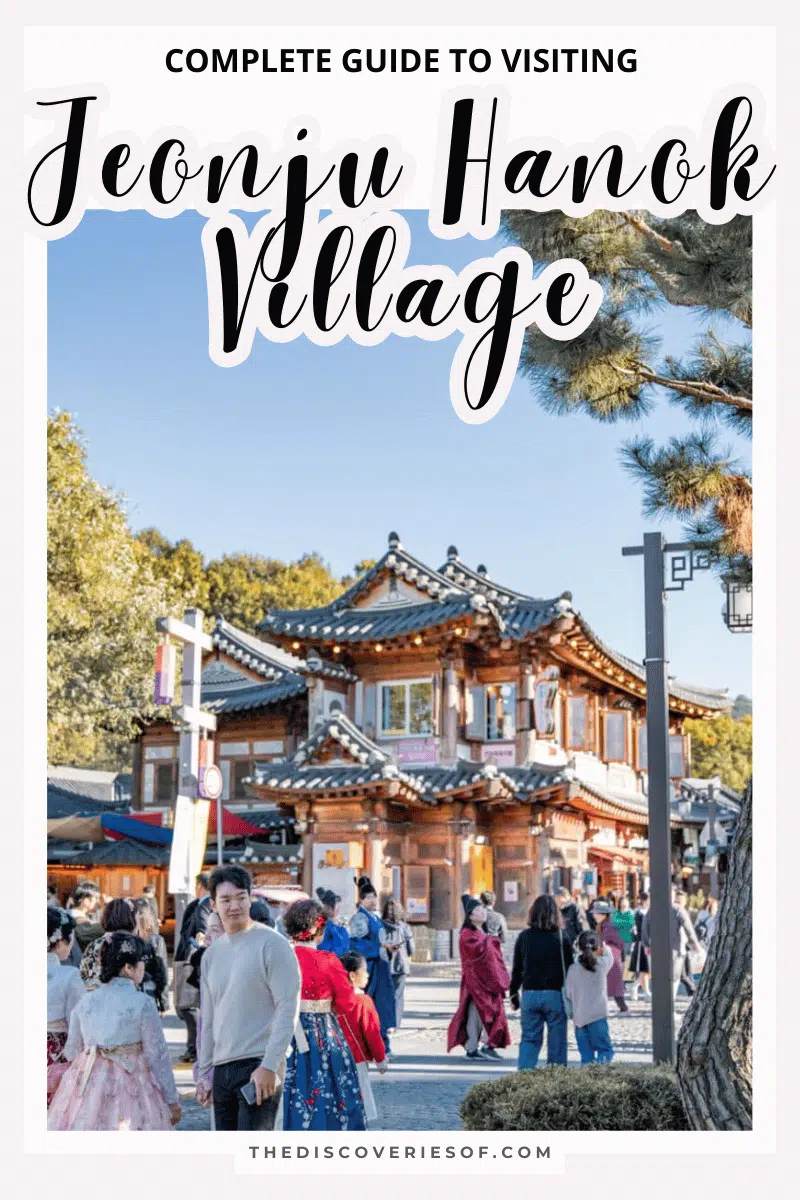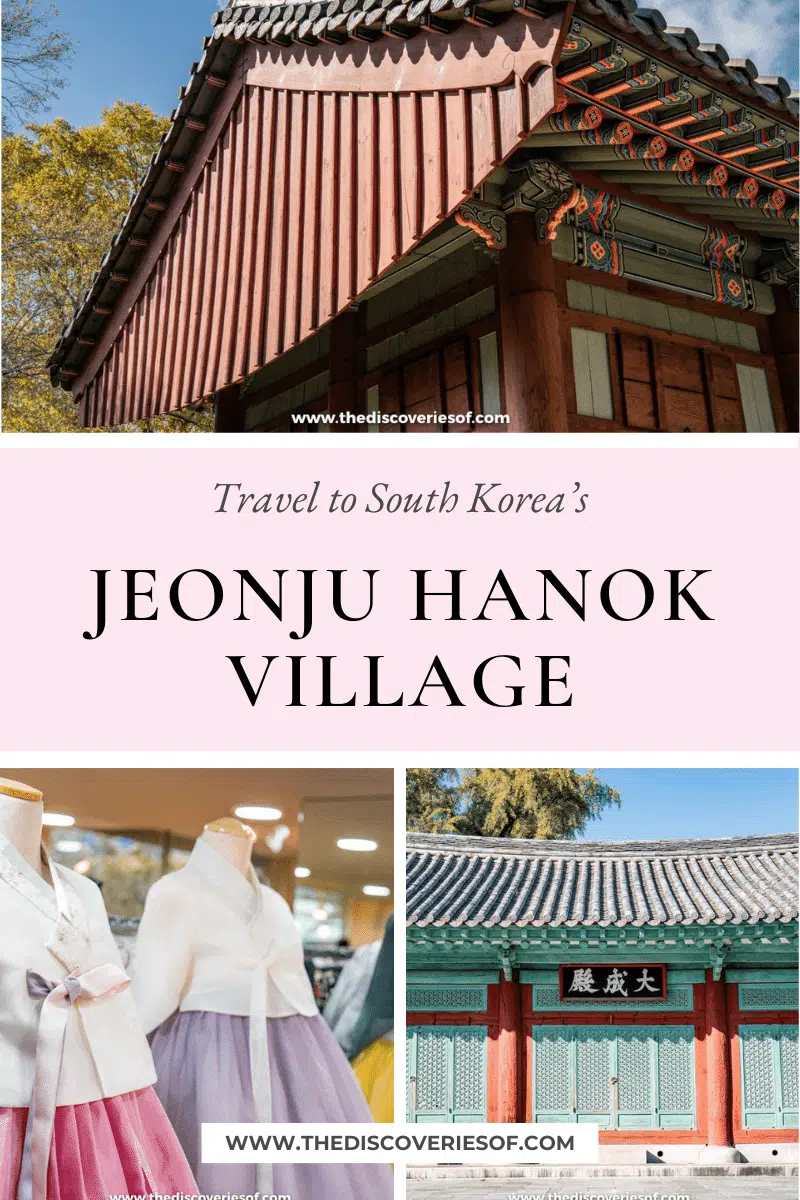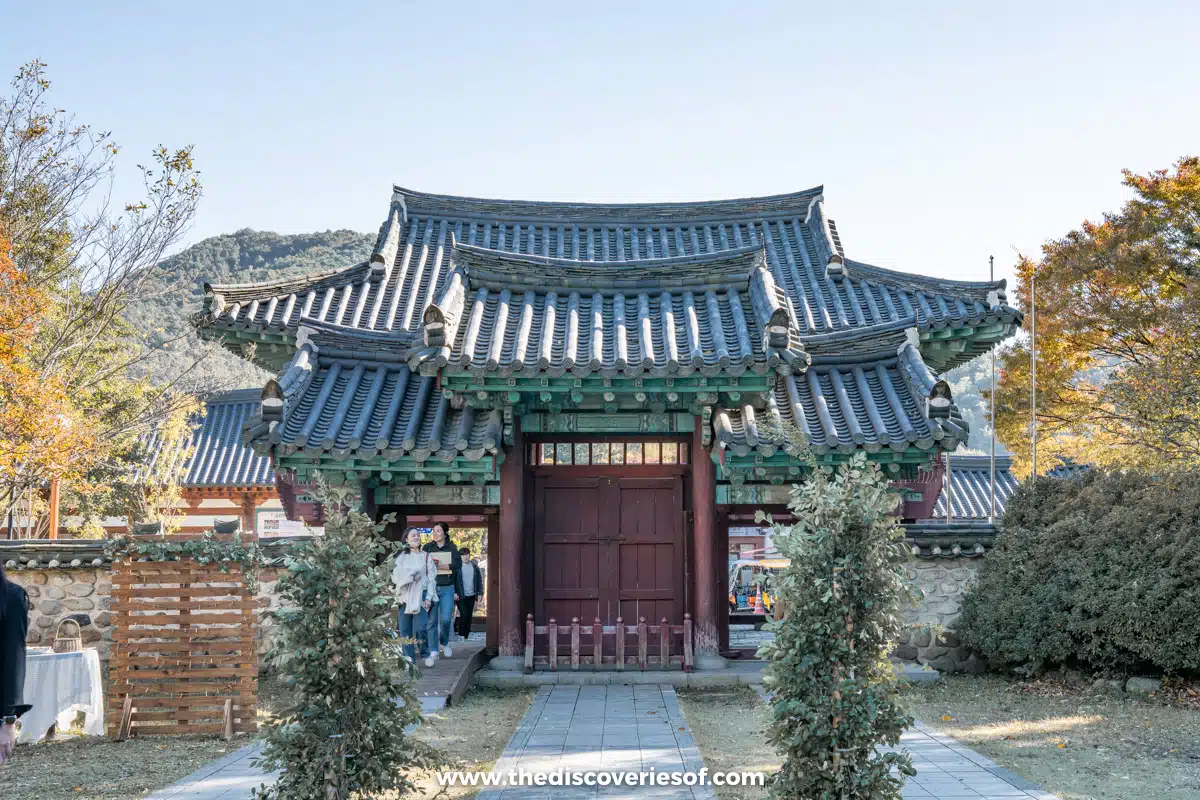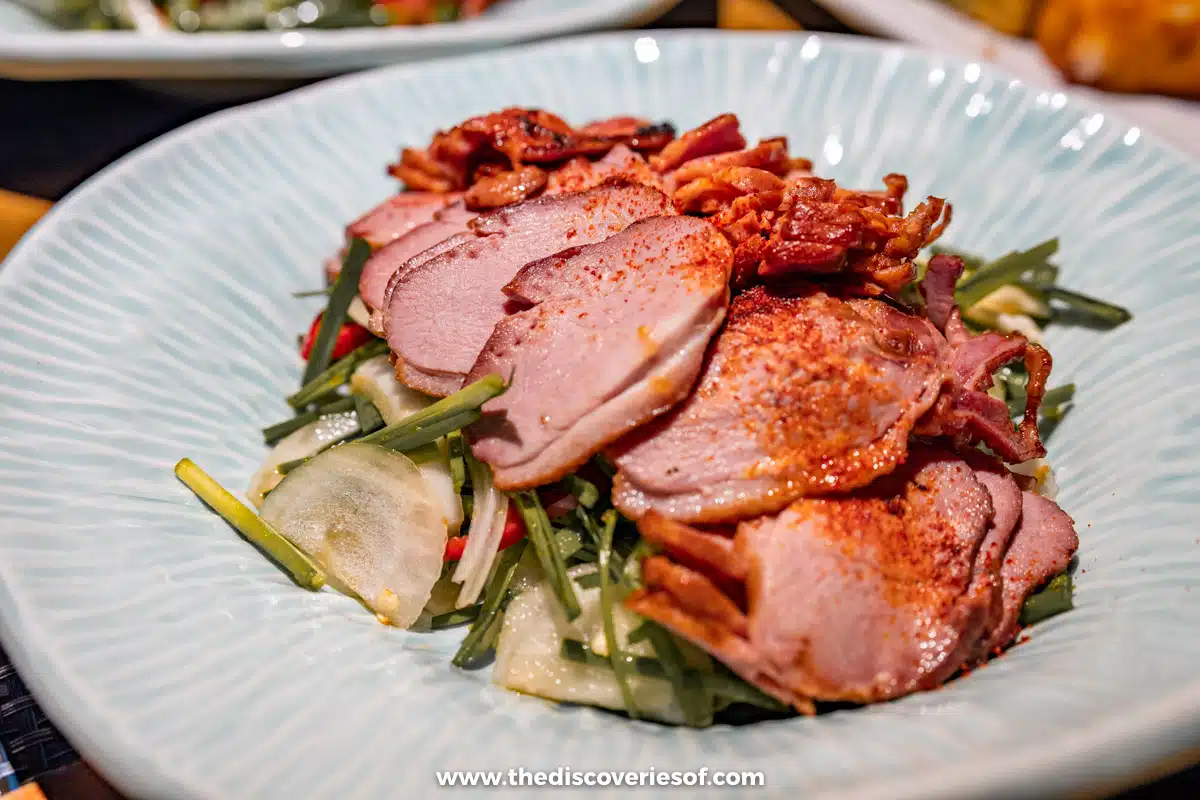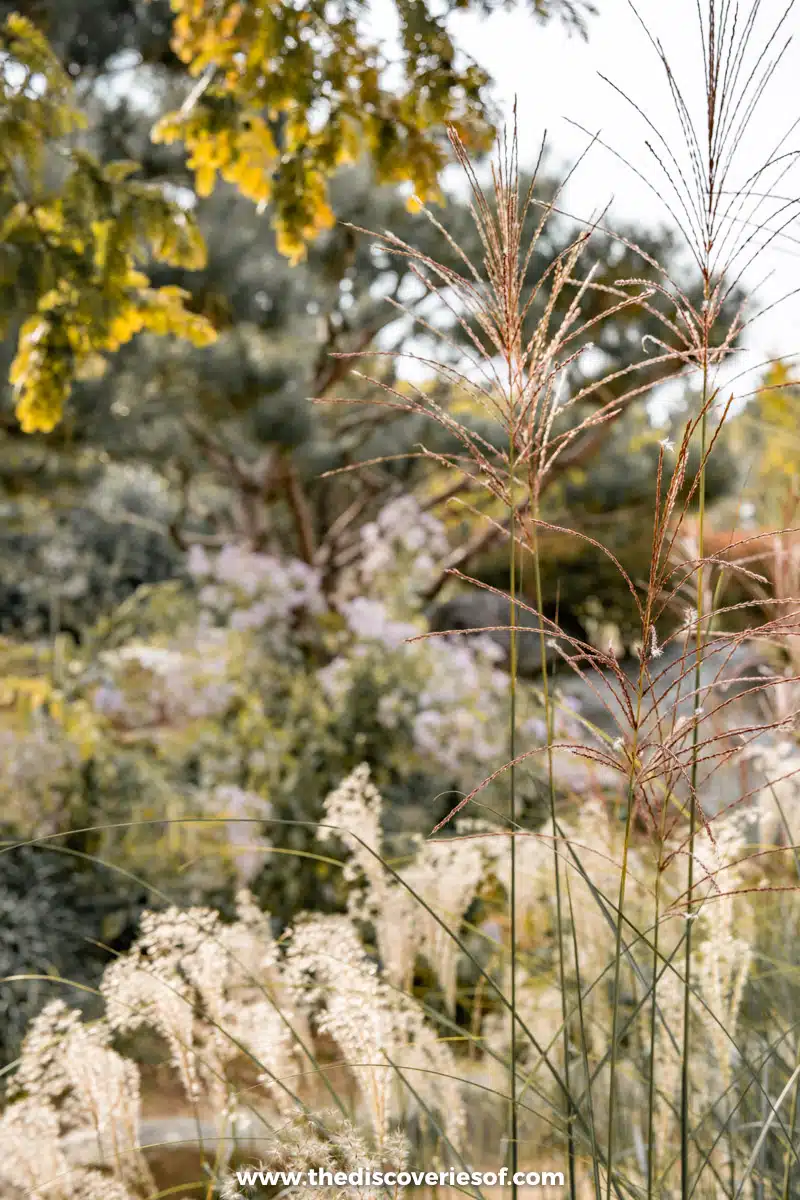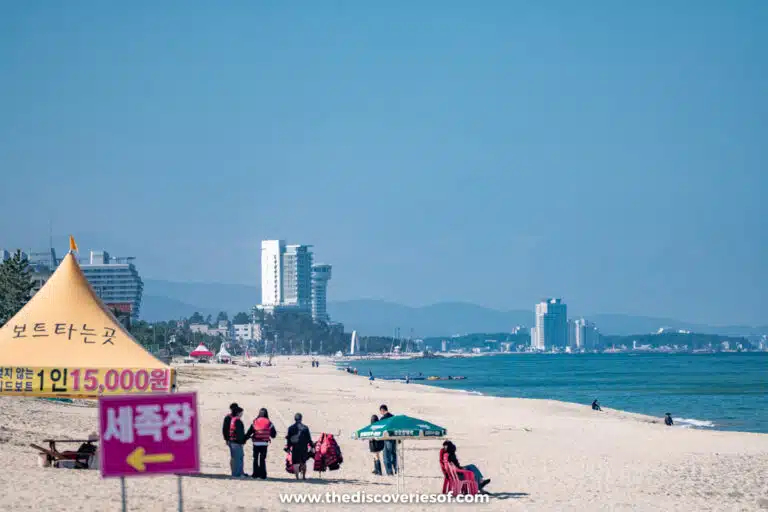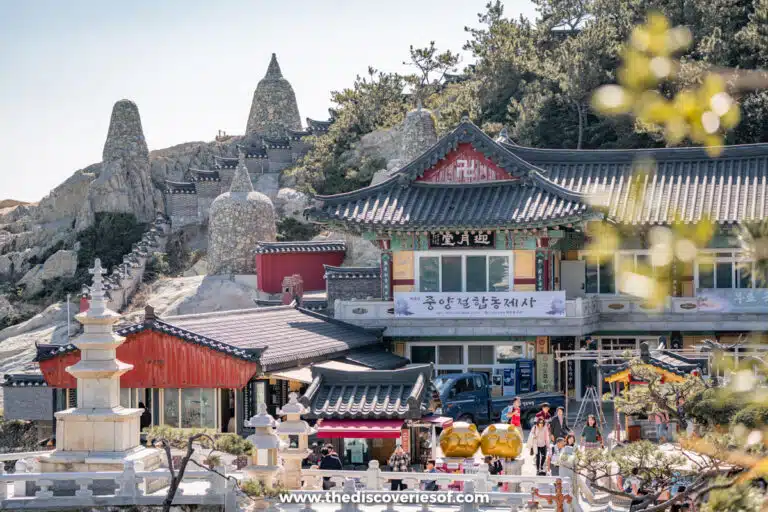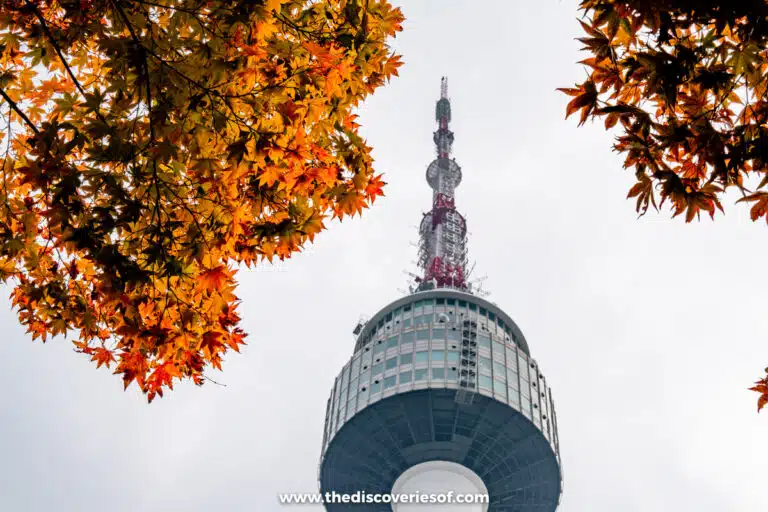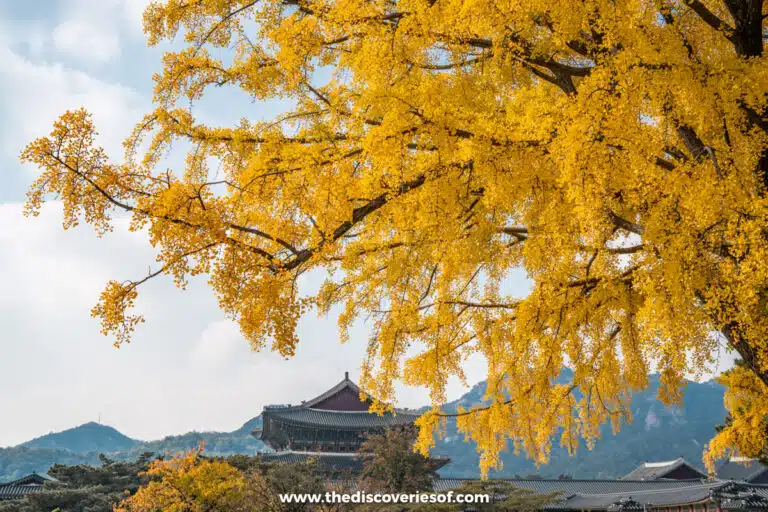Ready to take a trip to the largest Hanok village in South Korea? Delve into the rich culture of Jeonju Hanok Village and explore its past and present in this guide.
I’m willing to bet you’ll visit a Hanok Village, when you’re travelling through South Korea. Maybe by accident, or perhaps you’ve already heard about the charming collections of hardwood homes with tile roofs curling up towards the clear blue skies.
But why not visit the biggest and best? Enter Jeonju Hanok Village.
Jeonju isn’t just a stop along the tourist trail; it’s a living time capsule. Walking down the cobbled streets between the whopping 800 houses on my most recent visit, I couldn’t help but notice the energy that still buzzes through this historic village.
Locals and tourists travel near and far to stroll through the streets that evoke a South Korea deeply rooted in tradition and pride.
So put on your best Hanbok dress (you can rent one) and step back in time with a journey to Jeonju Hanok Village.
Why Visit Jeonju Hanok Village?
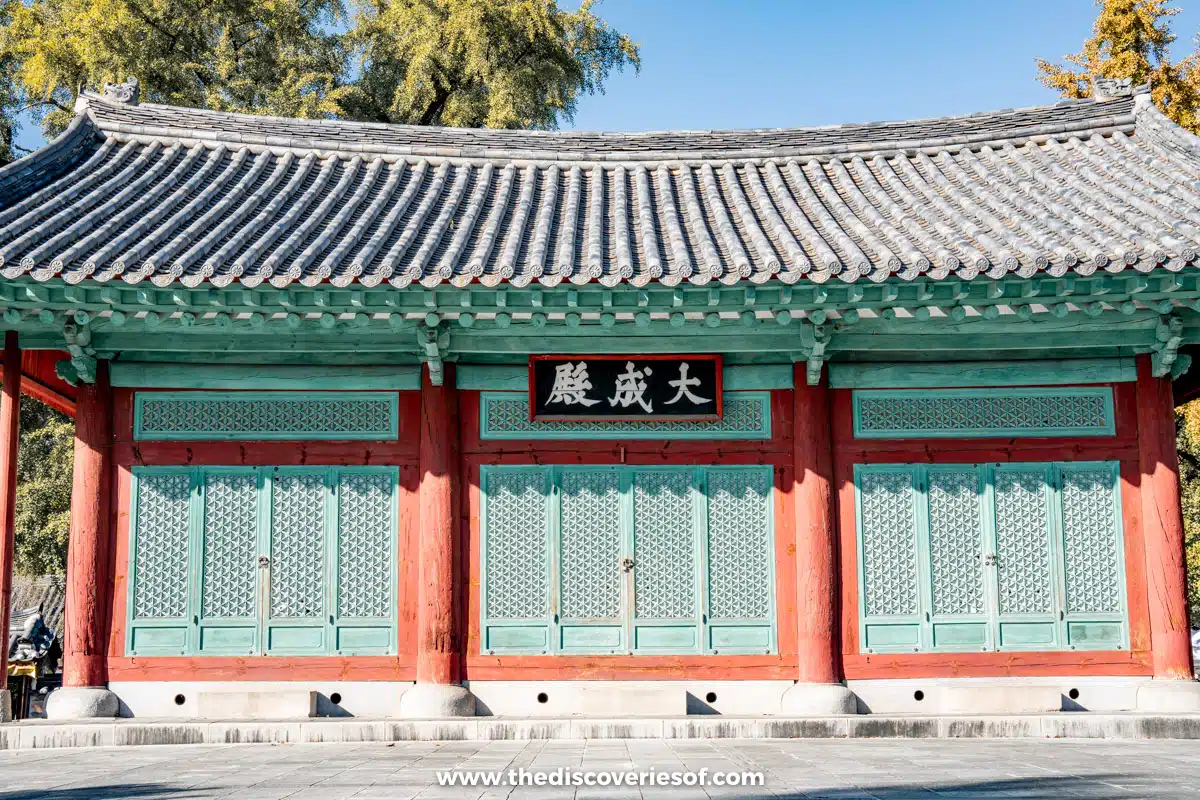
Jeonju Hanok Village isn’t just the largest Hanok Village in the world; it’s also the most charming. Walking around the cobbled streets and admiring the 20th-century Hanok homes are huge parts of the appeal of visiting Jeonju.
Friendly locals, traditional tea houses, and historic monuments like the Gyeonggijeon Shrine are just a few reasons that make visiting Jeonju Hanok Village a must on your trip to South Korea. Don’t worry – I’ll tell you all about these and some hidden gems soon.
More recently, Jeonju Hanok Village became an official Slow City by Cittaslow (the slow food movement group).
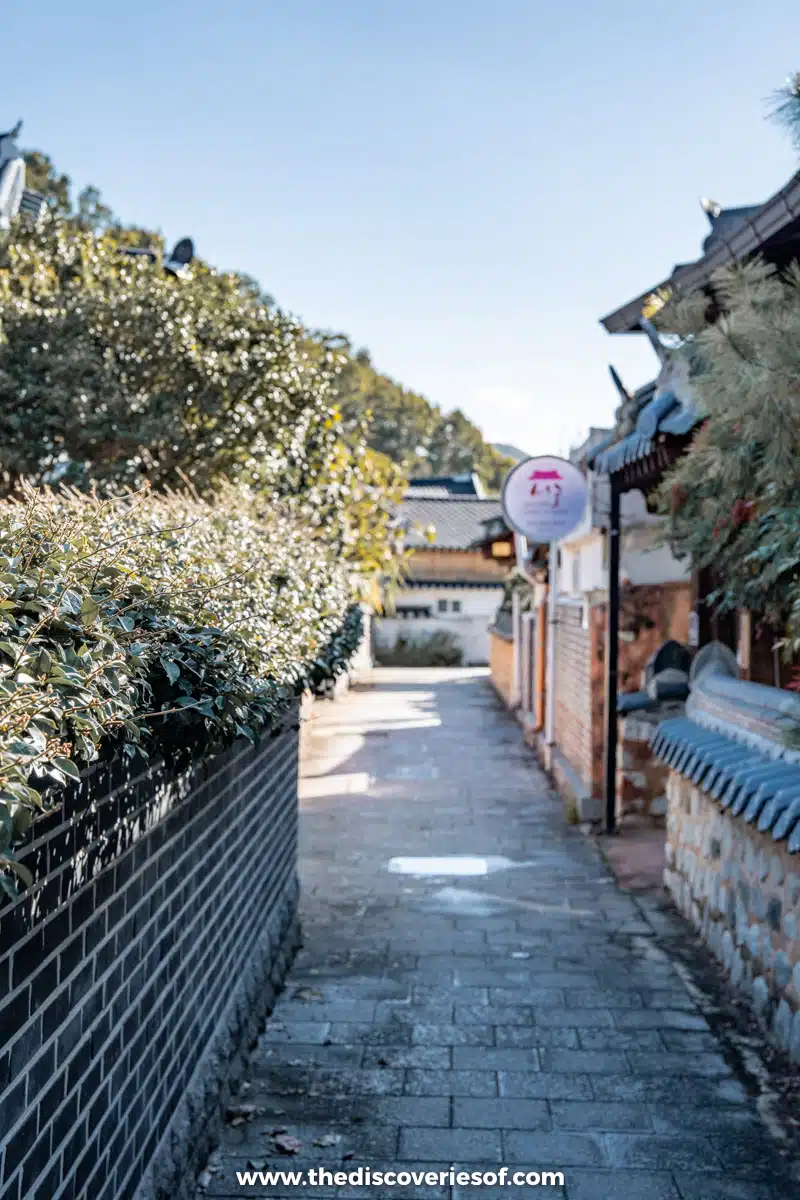
Why does this matter? The international organisation gives the honour to cities that preserve local traditions and offer high-quality food and beverage options and a laid-back quality of life. In other words, they have it all figured out.
Top Tip
Try to plan your trip around one of the annual festivals, like the famous Jeonju International Film Festival, each April and May to watch the town come alive.
Top Things to Do
Attend a Festival
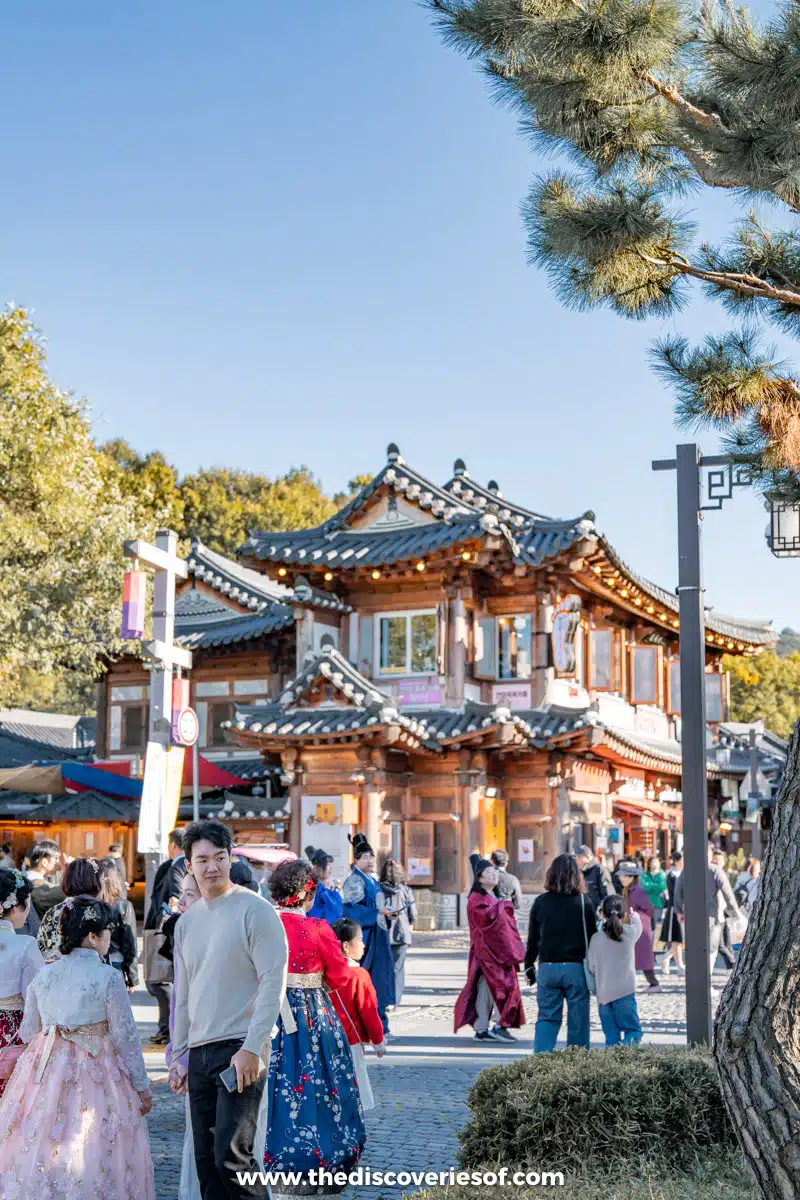
Jeonju Hanok Village is always a fun place to visit, but when you add a festival into the mix, an already memorable place becomes even more festive.
The Jeonju International Film Festival is the most famous, and it takes place every Spring. The event started in 2000 and features nearly 250 films and events across the city in different theatres and venues. It’s the city’s most well-known event and one of the best.
But the Jeonju Bibimbap Festival is another tradition, where the village comes alive each fall, celebrating the local dish with cooking competitions and other events highlighting the famous combination of rice, kimchi, meats, and veggies.
Either festival is a great choice, and there are plenty of smaller celebrations throughout the year.
Top Tip
Book your accommodation early if you’re attending any of the popular annual festivals, especially if you want to choose from the relatively limited options in the village itself.
Rent a Hanbok
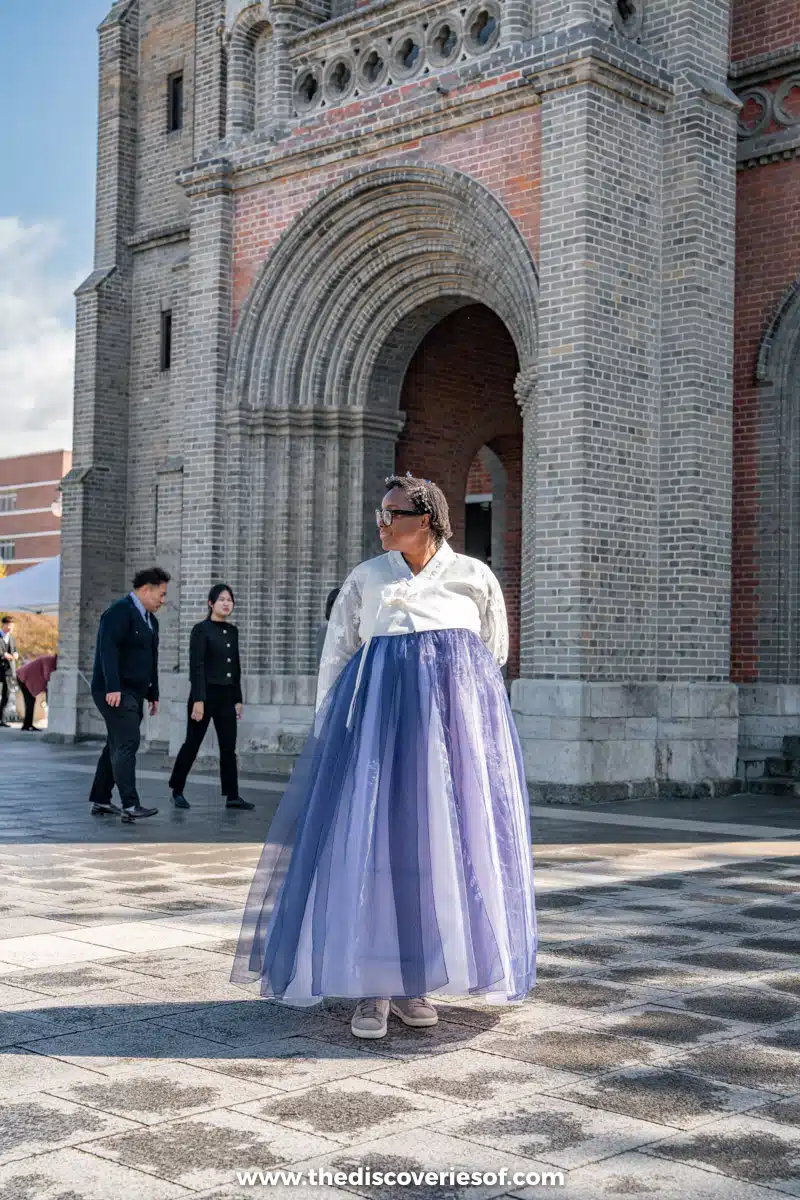
If you walk around Jeonju Hanok Village, you’ll probably see a lot of people strolling the cobbled streets wearing elaborate outfits from another era – this style of dress is called hanbok.
While the dresses have been around for thousands of years, they’re having a bit of a moment again thanks to popular culture staples like K-dramas.
The lightweight, loose-fitting clothing features elaborate designs, which (historically) spoke to your social status. Women often wear a dress (or skirt with a jacket, and men wear a robe or pants with a similar jacket (jeogori).
While hanboks are always a popular choice for special events, renting one for photo sessions is increasingly popular, and there’s really no better place than Jeonju Hanok Village.
Visit Gyeonggijeon Shrine
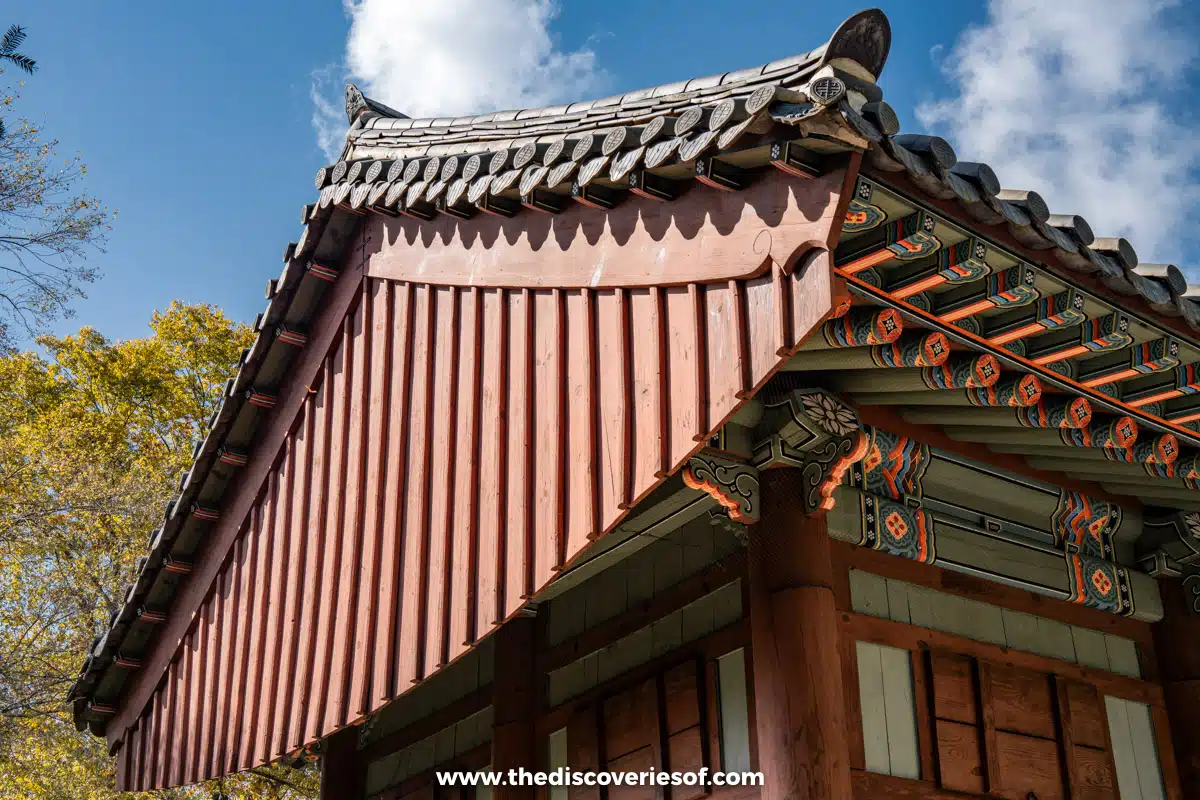
You can’t come to Jeonju village and not visit the Gyeonggijeon Shrine, the charming Hanok houses were literally built around the 15th-century year memorial.
An homage to the first royal Joseon Dynasty leader, King Tae-jo, you can find his portrait alongside other Korean dignitaries over the years.
The building and grounds are gorgeous and are one of the best places to take photos wearing traditional hanbok dress, so plan ahead.
Top Tip
Bring some cash. The museum is one of the only attractions in the village that you’ll need to pay for, and it costs £1.80 ($2.30).
Jeondong Catholic Cathedral
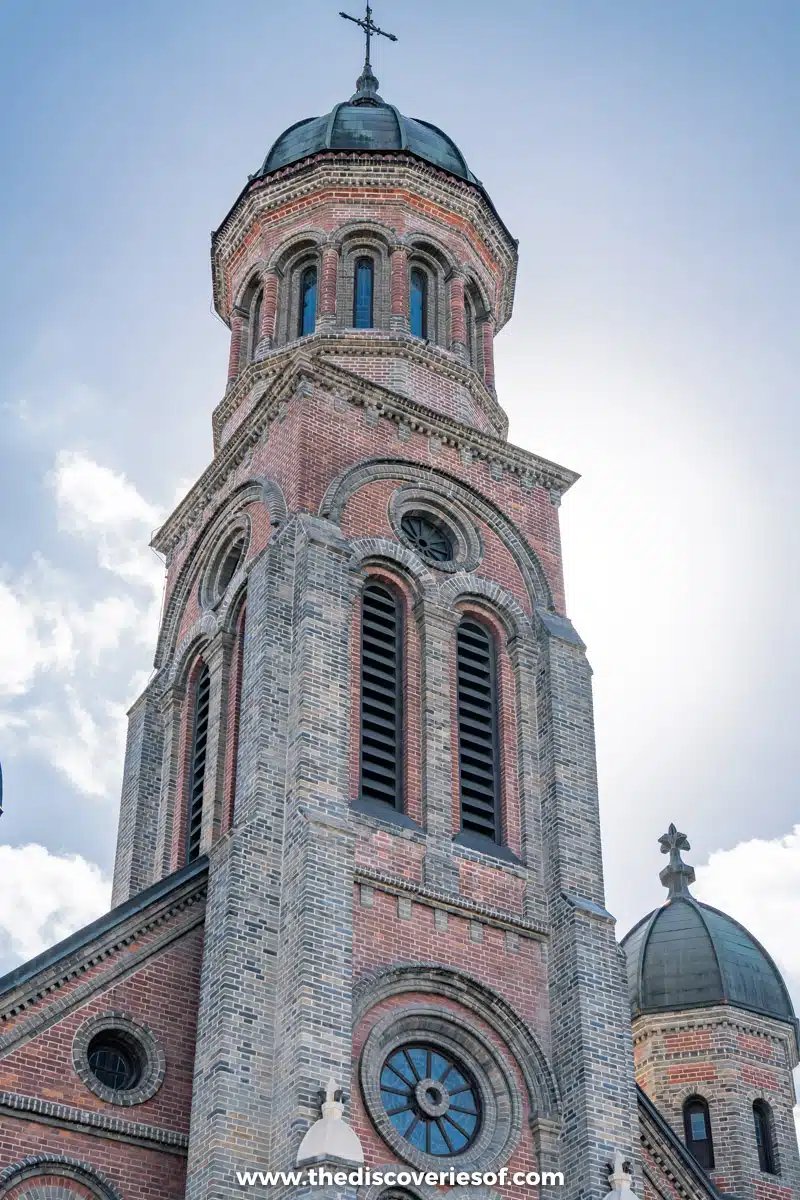
The 20th-century Roman-Byzantine cathedral may look a bit out of place next to the traditional Hanok-style homes, but it is a gorgeous building that’s an important part of local history.
Christians weren’t always welcome in this area, and under the Joseon Dynasty there were mass persecutions, mainly in the 1800s. And this church actually rests on the same land where Christian martyrs Paul Yun Ji-chung and Jacobus Kwon Sang-yeon were beheaded for disobeying Confucian laws.
It’s a fascinating look into Jeonju’s history, and the building itself is rumoured to have come from the walled fortress near Jeonju during the Japanese occupation.
See the Village From Omokdae and Imokdae Historic Sites
Looking down on the neatly designed rows of Hanok houses from above is an excellent way to appreciate the thought that went into designing this historic village. Omokdae offers one of the best viewpoints from above.
Omokdae and Imokdae Historic Sites are on the eastern corner of the village, perched high up on a cliff overlooking the village. The vantage point is perfect for seeing the curling tiled roofs and cobbled streets.
But the site is also home to a pavilion, walking bridge, and stones that pay tribute to King Taejo, whose family lived in this area and where he returned after an important victory of Japanese troops.
Visit a Confucian School
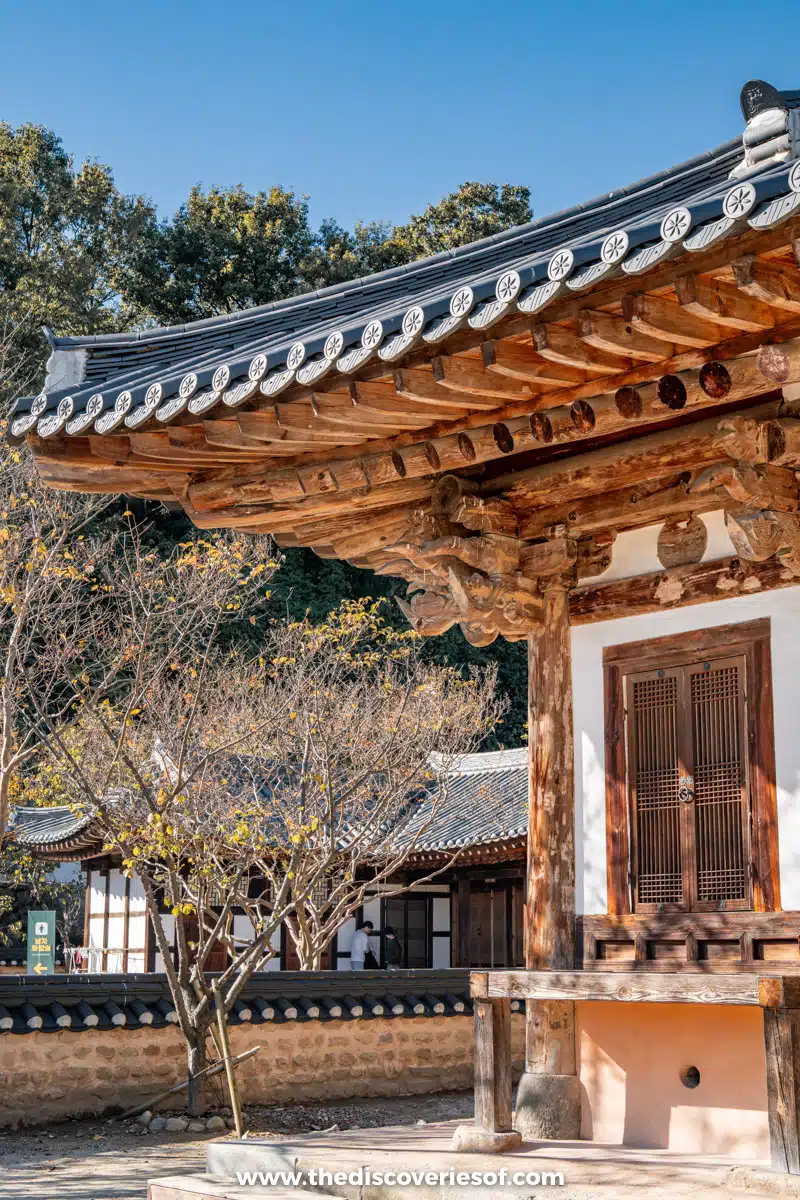
Confucian beliefs were an important aspect of the Joseon Dynasty rule, and you can still tour an academy dating back to the 15th century right in the middle of Jeonju Hanok Village.
Jeonju Hyanggyo used to be where Gyeonggijeon Shrine now sits, but it was moved to its current location in the early 17th century. The setting is absolutely gorgeous, with a large courtyard under several beautiful gingko trees that are easily a few hundred years old.
Top Tip
This is one of the most popular places to wear the hanbok dress as it’s one of the most historic, and the courtyard offers an excellent view of the Joseon-era building
Where To Rent a Hanbok & Top Tips for Doing So
Now that you know a bit more about what hanboks are, it’s time to rent one. Luckily, there are a few stores you can pick one up from, and there are lots of casual and formal designs.
Hanbok Significance
Wearing a hanbok tells a story; historically, it reveals your social and economic class. The materials used (like cotton or silk), colours, and patterns on the garment told stories about the family, event, or occupation.
Style of Hanbok
First, you’ll want to choose a hanbok that matches the occasion and maybe your personality. From formal wedding wear to dressing up like your favourite K-drama star, you can choose from endless options at the best shops.
Choose a Hanbok Shop
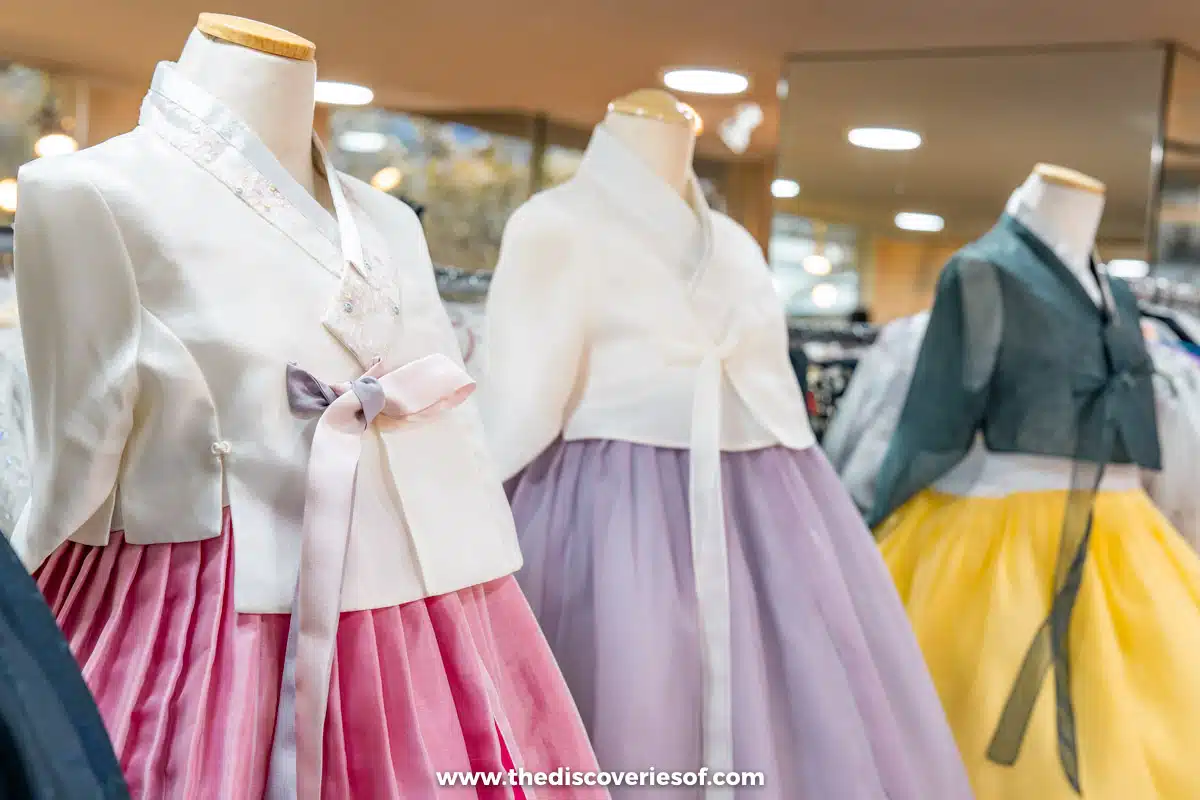
You can pack your hanbok when you travel or rent one when you get to Jeonju Hanok Village. There are a few popular shops along the main street, but Hanboknam is the most popular.
Expect to pay around £6 ($8) per hour for basic hanbok rentals.
Hair & Makeup
Wearing the hanbok requires attention to every detail, so be sure to ask about hairstyles and makeup if you plan on hosting a photo session. Both are reasonable, with the hairstyles only costing around £1.50 ($2).
Where to Eat and Drink
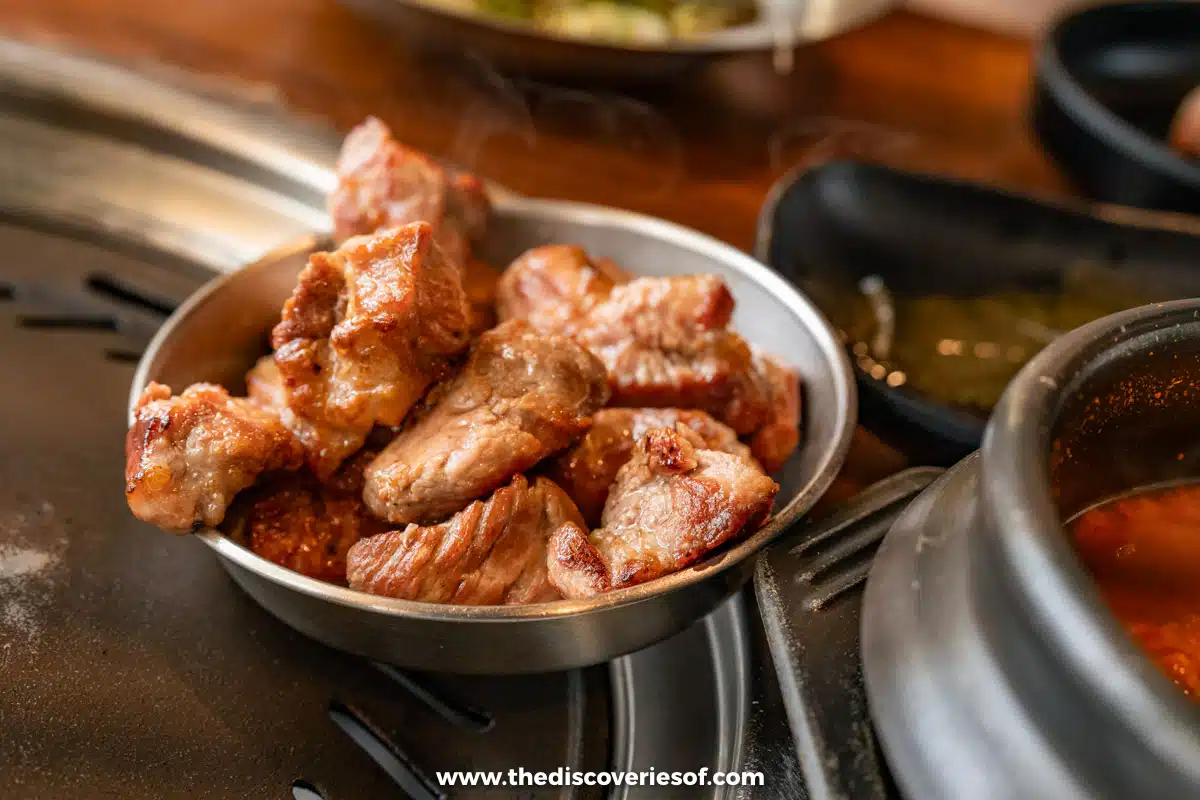
It’s no secret that Jeonju is a destination for great food. In fact, it’s an official UNESCO City of Gastronomy and the home of the world-famous rice bowl dish Bibimbap, so of course, you can find some fun things to eat inside.
PNB Hanok Village Point
Choco-pies are a thing in Jeonju. When you’re in Jeonju Hanok Village, you have to try the chocolate and marshmallow sandwich-style cake at the extremely popular PNB outpost right in the Hanok Village.
Dawoorang (다우랑)
Dawoorang (다우랑) is a famous shop inside the Hanok Village, best known for its shrimp dumplings. The steamed noodle pockets are stuffed to the brim with shrimp and chives. Order a few.
They’re open from 10 am to 9 pm but are extremely popular, and the line starts well before they open.
Octopus Skewer
Looking for the one item you need to try in Jeonju Hanok Village? Get the octopus skewer, and thank me later.
The grilled octopus is tender and delicious, and you can choose from fun toppings like bonito flakes and cheese for around £1.60-£2.40 ($2-$3).
Visit a Local Tea House
Visiting a local tea house is something that really helps you understand the centuries-old traditions in the ornate wooden walls of the Hanok buildings. It’s an opportunity to slow down, pay attention to each detail of the decor, and try a cup of Korean tea.
Gyodong Tea Garden is the most popular tea house in the village, and for good reason.
They have some really cool options, from the classic and a bit funky Shan Lin Xi to the GABA tea, which uses modern techniques during fermentation for more pronounced medicinal benefits.
You can also order rice cakes and yakgwa (a honey-based cookie) to complement the wide variety of tea flavours made with different herbs and flowers. Sign me up.
Top Tip
Alternatively, go to Gosindang. It’s not as famous, but serves tea alongside fun snacks like sherbert and red bean porridge in comfy digs.
The History of The Hanok Village
Before you can explore the history of Jeonju Hanok Village, you’ll want to know more about the city itself.
Jeonju is an ancient city with its roots dating back to 57 BCE. Over the years, it went from being a small market village to an important city with some of the most influential artwork, political figures, and food (I’m talking about you, bibimbap) in Korea.
Over the years, the city was the capital of one of the 3 Kingdoms of Korea (Hubaekje), the site of the physical and moral victory of the Imjin War invasions by Japan during the Battle of Jeonju, and where the original leader of the Joseon Dynasty was born.
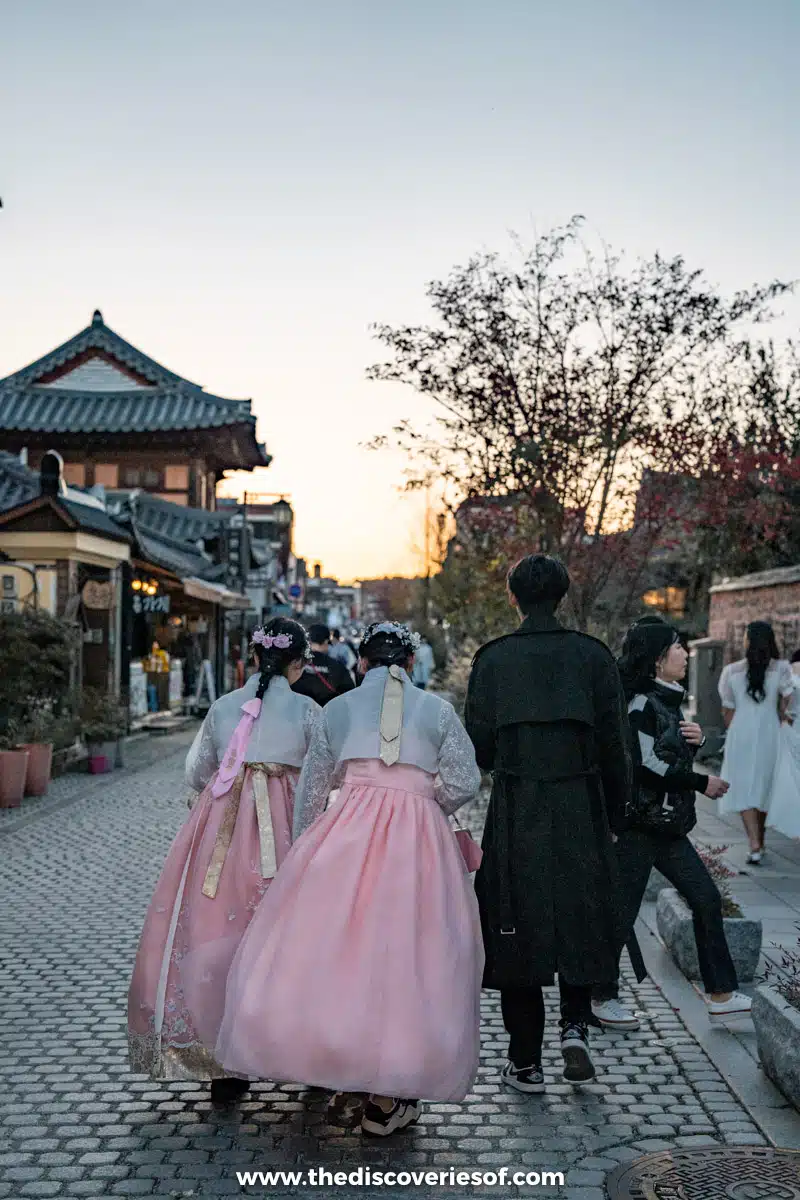
It’s not surprising that a city with this much history and significance to the Korean identity is home to the most iconic living example of a traditional Hanok village.
Construction of the Jeonju Hanok Village
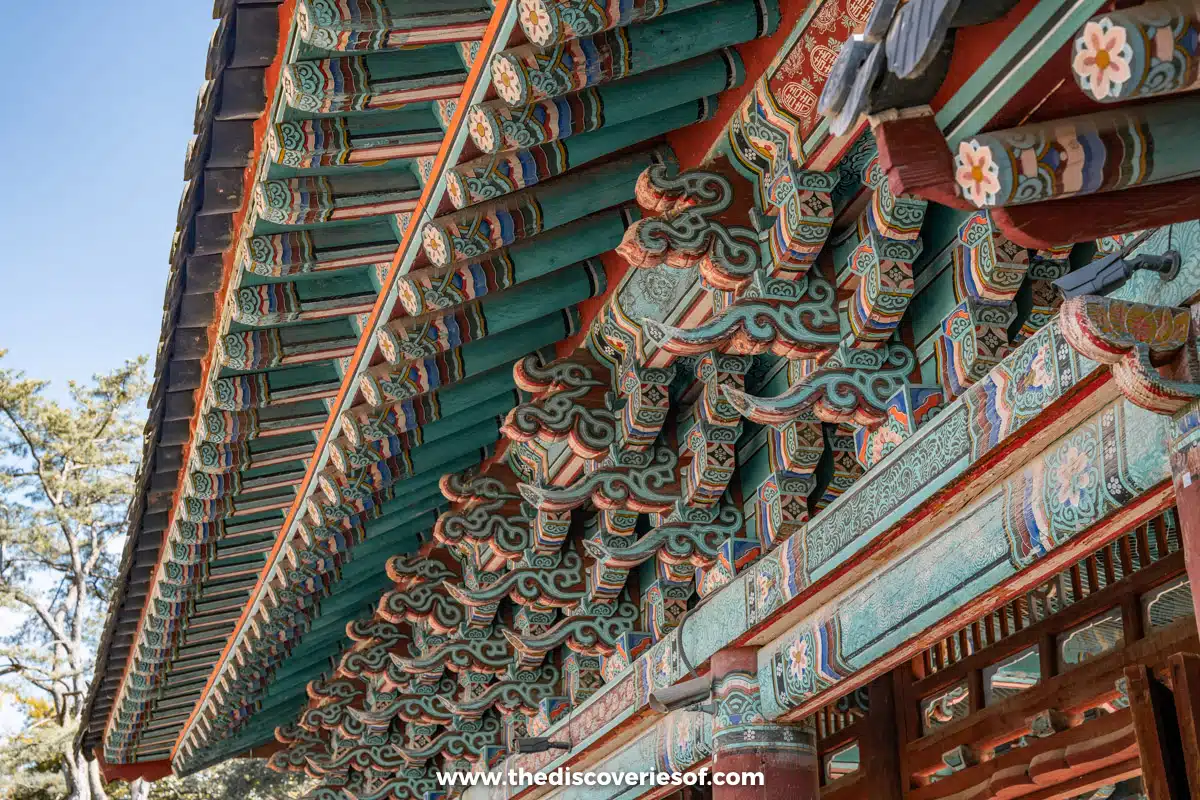
So, what exactly are the 800 (give or take) Hanok homes in Jeonju Hanok Village? They are traditional residences inspired by centuries of Joseon-era Korean customs.
The homes were made with large wooden beams, a stone exterior, and (in this case) tile roofs that famously curl toward the skies. Most notably, you’ll often find two different living areas in one home because men and women had separate quarters called the Sarangchae and Anchae.
Another characteristic of these houses is that residents often slept on the floor.
A specialised heating system called Ondol uses fire to heat a large stone, which warms the floor to a pleasant temperature. Brilliant, isn’t it?
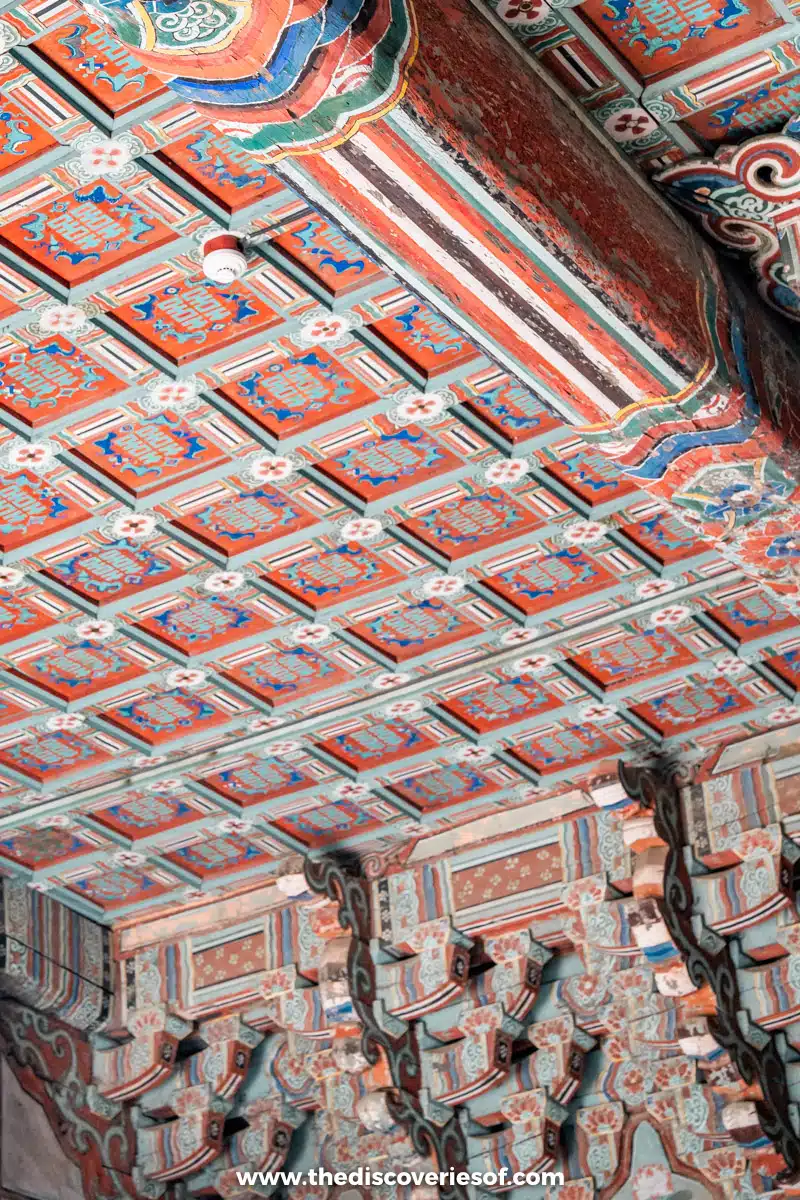
The village itself is more recent than you may think. Even the oldest houses in Jeonju Hanok Village are from the early 20th century.
When the Japanese occupied Korea from 1910-1945, South Korean residents noticed their neighbourhoods were changing. A lot. And you can still notice the stark difference that the Giwa-jib (tile roof) Hanok houses have compared to the more modern buildings throughout the rest of town.
Jeonju residents built the homes in the early 1930s, protecting the Gyeonggijeon Shrine in the middle with the Hanok-style homes.
Top Tips for Planning Your Visit
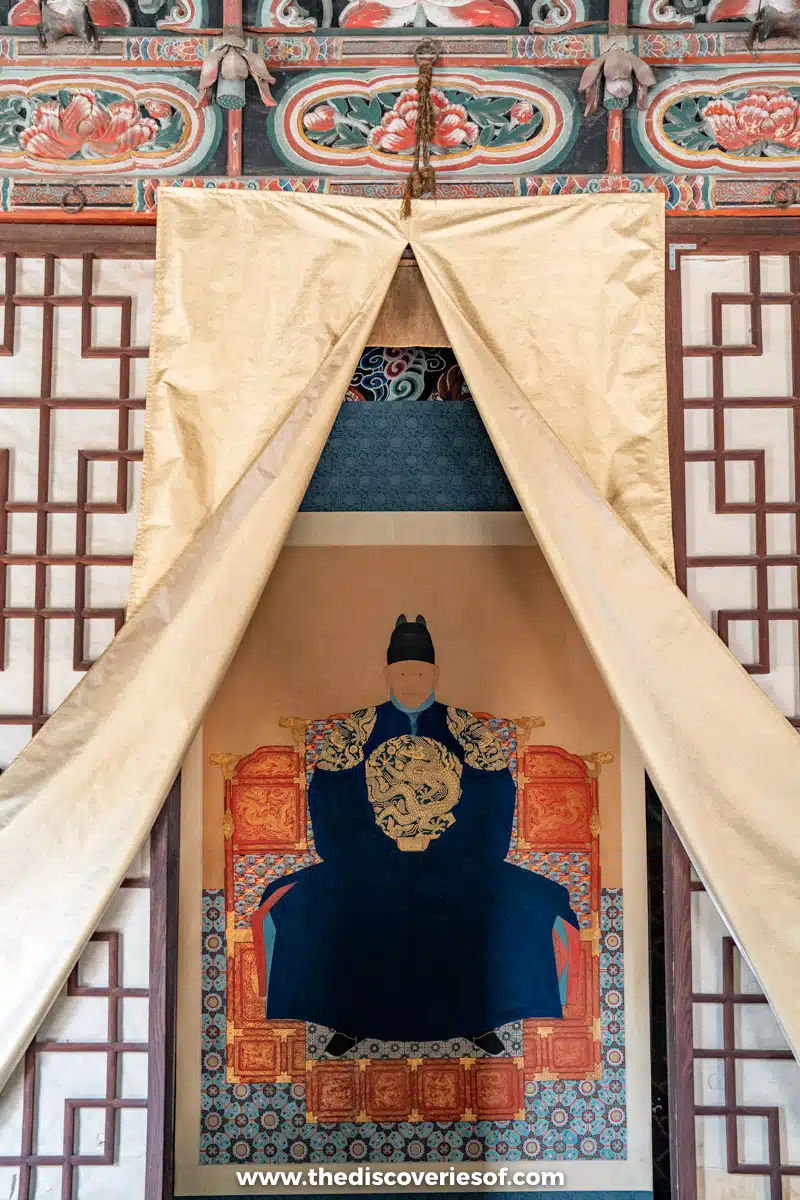
- If you’re looking to stay in the Hanok Village, there are lots of options from local hosts and on websites like Booking.com and Airbnb.
- Take your time and walk around the Hanok Village and chat with friendly shop owners and B&B hosts.
- Festivals are a wonderful way to experience festivities with locals in the historic village.
- You can stop by one of the Tourist Information Centers and pick up a map for important landmarks and information on parking lots and bus stops.
- Most areas of the village are free, but you’ll need to pay admission to the Gyeonggijeon Shrine.
Practical Information
Jeonju Hanok Village Address
99 Girin-daero, Wansan-gu, Jeonju, Jeollabuk-do, South Korea
Opening Times
Jeonju Hanok Village is open 24/7, 365 Days per year, but individual businesses have varying hours.
Getting There
You can get from Seoul to Jeonju Hanok Village a few different ways. You can drive, which takes around 3-3.5 hours, depending on traffic. Alternatively, you can take a bus or train, both of which reach Jeonju in around 3 hours.
The KTX from Yongsan Station costs around £28 ($35), but I highly recommend upgrading to 1st class, which only costs about £8 ($10) more. The ride is much more comfortable, and you’ll have plug-ins and WiFi at your seat.
If you opt for the bus, tickets average around £15 ($19), and it gets there in about 3.5 hours.
Where to Stay
Interested in making Jeonju Hanok Village more than a day trip? I have good news. You can spend the night (or several) in the Joseon-era-inspired homes.
I couldn’t do this on my last visit, but I’ve heard that renting a guest house allows you to immerse yourself in the culture and lifestyle in ways you can’t do in one afternoon. Rain check.
How do you stay in one? You can find listings on Airbnb or try the popular Happiness Hanok Full Guesthouse on Booking.com – just reserve one in advance.
Top Tip
I highly recommend sharing a guest house with locals to learn more about this history and traditions from Jeonju residents.
Jeonju Hanok Village Map
Read More South Korea Guides
Love This? Save and Share on Pinterest
